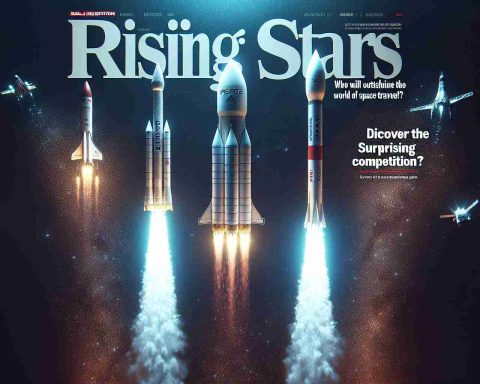The Meteoric Rise of Starlink in 2024
SpaceX’s Starlink has experienced astonishing growth, as highlighted in a recent analysis by Quilty Space. In 2024, Starlink’s revenue skyrocketed to an estimated $7.8 billion, a remarkable leap from $2.9 billion in 2023. This surge is attributed to a combination of consumer subscriptions, government contracts, and mobility solutions.
The success of Starlink’s service is evident, with the satellite constellation concluding 2024 with 4.6 million active customers—more than double the number reported just a year earlier. In comparison, leading competitors Hughes Network Systems and Viasat had a peak of 2.2 million subscribers collectively.
Quilty’s research illuminated how Starlink’s extensive global reach and an ever-expanding network of satellites contributed significantly to its expansion. The subscriber base is projected to grow to 7.6 million by 2025, with a substantial portion coming from new markets in Africa and Asia.
Starlink’s government contracts alone generated approximately $2 billion in revenue for 2024, with expectations to climb even higher. Military programs, particularly with the U.S. Space Force, are shifting from trials to full deployment, potentially increasing Starlink’s revenue from this segment.
Additionally, Starlink’s entry into maritime and aviation markets has disrupted traditional satellite industries. With over 450 aircraft and more than 75,000 vessels now connected, Starlink is redefining industry standards with its rapid service and expansive reach.
The Broader Impact of Starlink’s Expansion
The rapid ascent of Starlink not only signifies a remarkable milestone for SpaceX but also presents substantial implications for society, culture, and the global economy. As the digital landscape transforms, the influence of accessible high-speed internet cannot be overstated. Starlink’s expansion promises to bridge the digital divide, particularly in remote and underserved regions. This increased access supports local economies by enabling e-commerce and remote work, fostering a new wave of entrepreneurial opportunities.
Moreover, the implications for education are profound. With more students gaining access to reliable internet, the potential for online education to flourish increases. Educational resources that were once limited to urban centers can now reach remote villages, empowering the next generation with knowledge and skills previously out of reach.
On a global scale, the proliferation of satellite internet raises pertinent questions about environmental effects. The expansive satellite constellation necessitates significant resources for launch and manufacturing, potentially contributing to space debris and raising sustainability concerns. The balance between technological advancement and environmental stewardship will be critical as the industry grows.
Looking ahead, future trends may involve regulatory scrutiny as governments grapple with the implications of satellite dominance in communication. The trend towards privatized space initiatives may redefine international norms and shared resources, engaging a broader conversation about the governance of outer space.
In conclusion, Starlink’s trajectory underscores a pivotal moment in the interplay between technology, society, and the environment. Its long-term significance will be shaped by how these challenges and opportunities are navigated in the years to come.
Starlink: The Future of Global Connectivity in 2024 and Beyond
The Rise of Starlink in 2024
SpaceX’s Starlink has truly transformed the satellite internet landscape with its unprecedented growth in 2024. According to recent analysis by Quilty Space, Starlink’s revenue reached an astounding $7.8 billion, up from $2.9 billion in 2023. This explosive growth can be attributed to a robust mix of consumer subscriptions, government contracts, and innovative mobility solutions.
Subscriber Growth and Market Expansion
By the end of 2024, Starlink boasted 4.6 million active customers, more than doubling its subscriber count from the previous year. In stark contrast, its main competitors, Hughes Network Systems and Viasat, collectively reached only 2.2 million subscribers. This eye-catching growth is expected to continue, with projections estimating a rise to 7.6 million subscribers by 2025, particularly driven by expanding markets in Africa and Asia.
Government Contracts and Military Applications
Government contracts have significantly bolstered Starlink’s revenue, contributing approximately $2 billion in 2024. This sector is predicted to grow, especially with increasing military collaborations, such as those with the U.S. Space Force, transitioning from trial phases to full operational deployments. These developments not only enhance Starlink’s revenue prospects but also solidify its position as a key player in the defense communications landscape.
Disruption in Maritime and Aviation Industries
Starlink’s penetration into the maritime and aviation markets is reshaping traditional satellite services. As of 2024, the service connects over 450 aircraft and more than 75,000 vessels, challenging established providers and setting new benchmarks for connectivity in challenging environments. The rapid service capabilities and extensive coverage are making Starlink the go-to choice for industries requiring reliable internet access.
Pros and Cons of Starlink
– Pros:
– Global Coverage: Starlink provides internet service in remote and underserved areas, bridging the digital divide.
– High-Speed Internet: Users report improved internet speeds compared to traditional satellite services.
– Low Latency: Starlink aims for latency comparable to ground-based services.
– Cons:
– Dependent on Clear Skies: Weather conditions can impact service quality.
– Cost: The initial setup and subscription fees can be higher than some traditional internet services.
– Space Debris Concerns: The rapid expansion of Starlink satellites raises concerns regarding space clutter and potential collisions.
Innovations and Features
Starlink’s commitment to innovation is evident in its ongoing satellite launches and enhancements to user experience. The service is integrating advanced technologies for better signal strength and data transfer efficiency. Future updates are expected to include increased bandwidth and enhanced compatibility with various devices.
Market Trends and Predictions
With its current trajectory, Starlink is poised to dominate the satellite internet market. Analysts predict that as more satellites are deployed, the capacity and reliability of service will improve, encouraging even more subscriptions. Additionally, with ongoing expansions into emerging markets, Starlink could see even greater adoption rates.
Sustainability and Security Aspects
SpaceX is actively working to alleviate concerns surrounding space debris through its satellite design and operational guidelines. Moreover, the company focuses on providing secure communications for both civilian and military users, emphasizing encryption and resilience against cyber threats.
As Starlink continues its rapid expansion and innovation, it stands at the forefront of a connectivity revolution poised to alter how individuals and businesses utilize internet services worldwide. To stay updated on the latest news regarding Starlink’s developments, visit SpaceX’s official website.




















